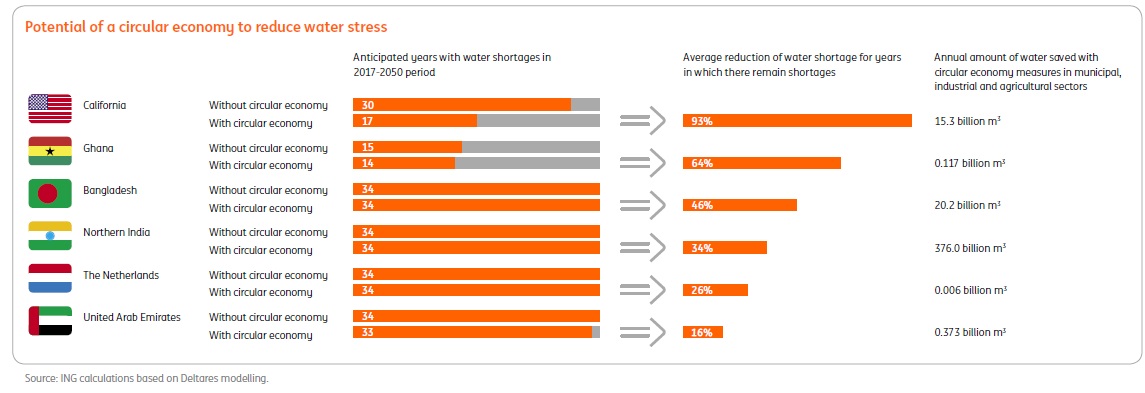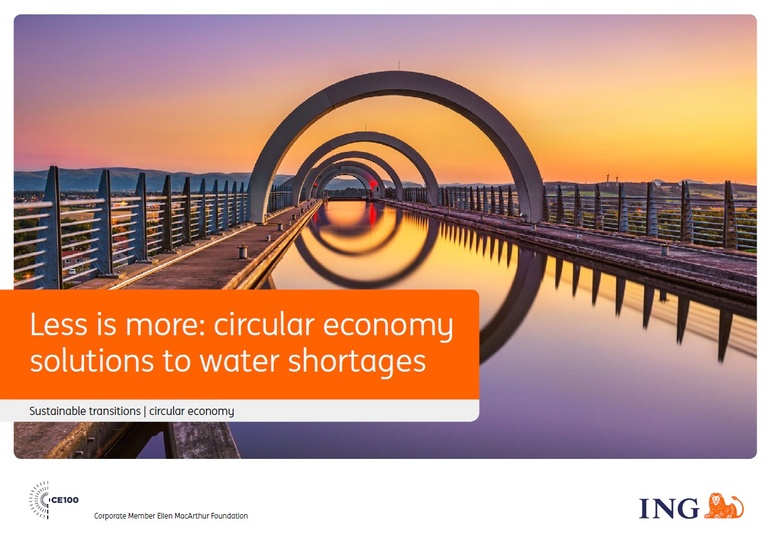Less is more: circular economy solutions to water shortages
The circular economy could potentially save 412 billion m3 of water in the regions covered and provide many new business opportunities
Circular economy can significantly reduce water stress
The concept of a circular economy is much talked about in relation to the water sector, but it’s potential to reduce water shortages is still unclear. This report finds that the circular economy - which aims to reduce, re-use and retain water - is not able to fully eliminate water shortages. It is, however, very capable of reducing water shortages. For example, in the very water stressed region of California, it has been shown to almost halve the number of years of anticipated water shortages. For the years for which shortages remain, these are reduced by more than 90%. As such, a circular economy could provide an alternative for desalination projects that come with high environmental and social costs. In the United Arab Emirates, however, water shortages are only slightly alleviated by the circular economy. As such, desalination will continue to play a crucial role in this region in addressing water shortages. For the six regions covered by our report, we believe the circular economy has the potential to save 412 billion m3 of water a year, which is equivalent to 11% of annual global water demand, or almost the entire water consumption in the US.

New business opportunities
Applying the principles of a circular economy requires transformative change from the current linear water systems. As such, it offers businesses in the water supply chain with a wide range of opportunities especially in the field of efficient irrigation techniques, sustainable water pumping, as well as water treatment and re-use. In already advanced water systems, such as in the United Arab Emirates where re-use of water is already widely applied, technology can only play a limited role and further improvement must come from behavioural changes.
Mind the pitfalls though
Circular economy measures can look appealing when viewed in isolation. However, the circular economy requires a system approach to assess whether measures are effective. For example, efficient irrigation systems could have a negative impact on ground water levels, calling for artificial recharge in order to prevent these measures aggravating water shortages. Furthermore, a reduction in water use from circular economy measures might be reduced by an increase in water demand (the so called rebound effect, see page 20). Last but not least, technology is available to treat and recycle highly contaminated water to drinking standards, but the so called ‘yuck-factor’ might limit its re-usability.
To download the full report, please click here.

